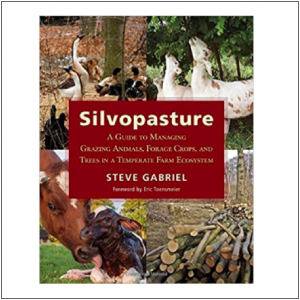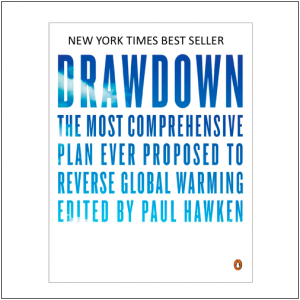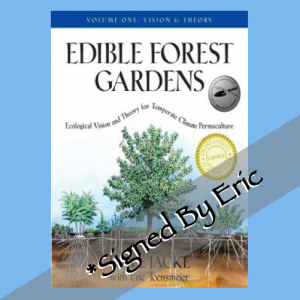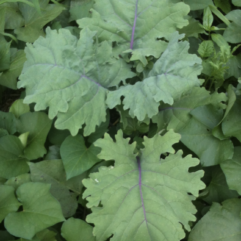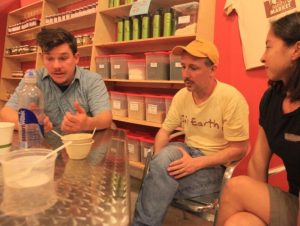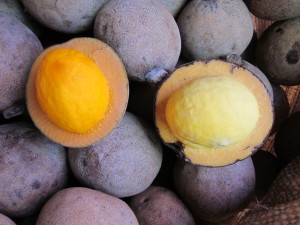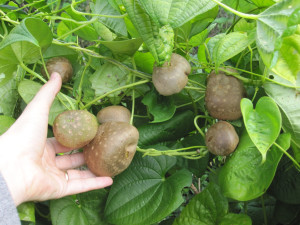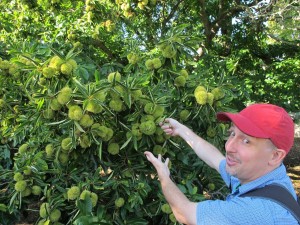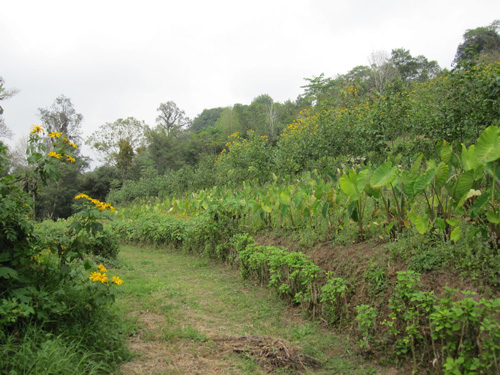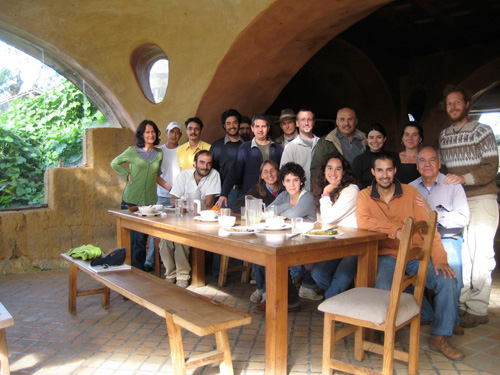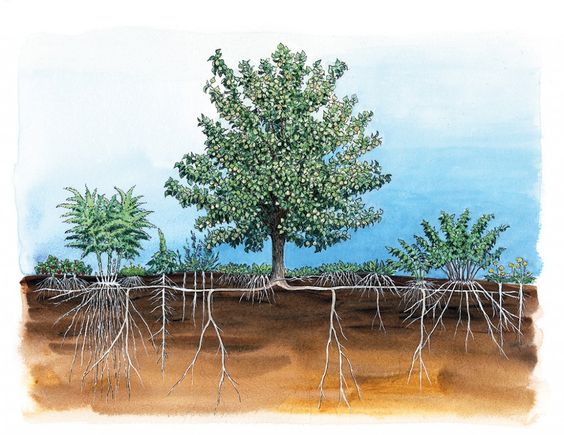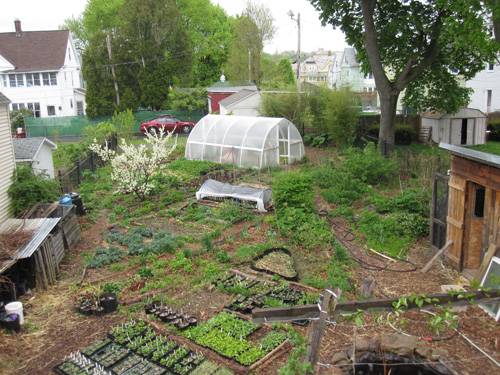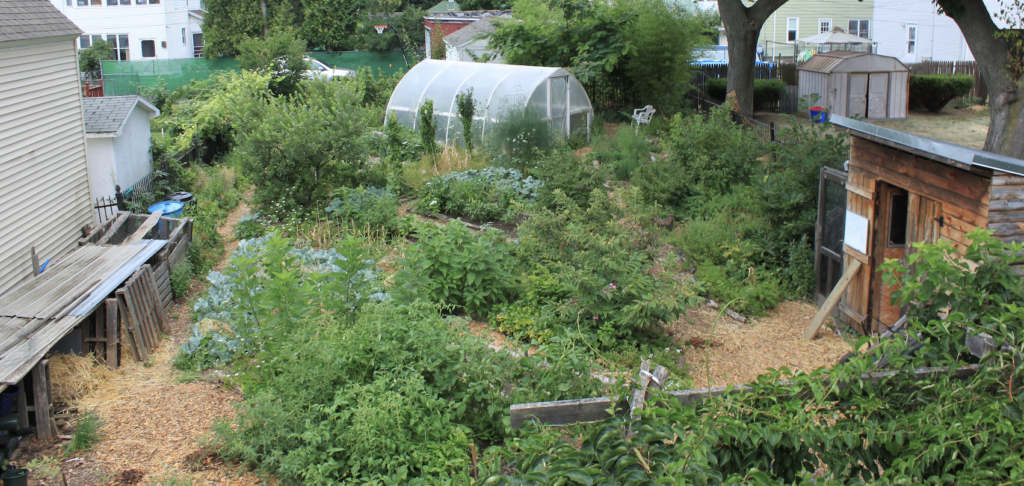
Note: I’m teaching an edible forest gardens workshop at my new farm in Southampton MA, USA from June 30-July 1. You can learn more and register here. You may know my books Edible Forest Gardens (with Dave Jacke), Perennial Vegetables, Paradise Lot, and more.
A food forest, or edible forest garden, is an ancient food production system that goes back thousands of years, especially in the tropics. Yet there’s still much to learn today, especially in cold climates.
Sometimes in all of the excitement about food forests, it’s possible to get too focused on the food. Of course fruit and nut trees are very important! Some food forests also include perennial vegetables and other crops in the understory, which is fantastic. But let us not forget the many other important functions that can turn a collection of individual species into a functioning ecosystem.
Dave Jacke and I included a number of these functions when we were writing Edible Forest Gardens. In the almost twenty years since then, much more has been learned. I’d like to share a little bit about that in this article.
A planting I’m working on, that we will plant some of as part of the course, can help to illustrate. The area we’ll be planting is on a mound in middle of what was until a month ago a sea of lawn. The mound was previously planted to evergreen ornamentals like rhododendrons, junipers, and arborvitae.
All spring we’ve been planting patches of the lawn to blueberries, raspberries, blackberries, grapes, strawberries, asparagus, and (my favorite), a garden of trees with edible leaves. These areas are focused on production and will be managed with geese to mow and weed beneath and between the crops.
The focus of the mound is to provide food and habitat for beneficial organisms, including insect pollinators, hummingbirds, birds that eat insects, and predatory and parasitoid insects. In contrast to the surrounding beds, the focus is exclusively on plants native to the northeastern US. I’d also like it to serve as a nursery, from which we can plant out other areas of the farm in the future.
Here is the list of species we are working with, including their uses for people and select ecosystem functions related to the goals of the planting. It’s striking that while no one plant provides all of what we need, that an assembly of species like this can provide robust ecosystem functions. I’m also always impressed at how many functions each species can provide.


Edible Plants
Let’s begin with food plants for a moment. This planting is primarily oriented towards birds and insects, yet it offers quite a diverse menu to people as well. In this case of this particular planting, none of these is being planted only for its food production. All of these are multifunctional species.


Native plants
In this case, all species in the planting are native to the northeastern US, and the great majority to our state, and even our county. We’ve drawn especially from species that grow in sand plains, as that’s the soil type here at the farm.
Soil health functions
Many of the species are being included because of benefits to soil health. Many fix nitrogen to help build soil and fertilize their neighbors. Some are groundcovers, helping keep a living mulch on the soil (and providing some weed control as well). Finally, some are warm-season grasses with carbon-rich mulch for weed suppression and soil building.


Insectivorous and Omnivorous Bird Food. Birds can play an important role in pest control – and of course they are worth providing food and shelter for on their own. I’ve spent the last decade reading books like Bird by Bird Gardening, Gardening for Birds, and economic ornithology texts from the early 1900s to learn which birds are desirable, and how to attract them. Here are some species we are planting and their rankings for food and habitat for these important birds. Note that in some cases providing food for omnivorous birds means attracting the insects which actually feed the birds. Note that hummingbirds are included not only as pollinators, but also as heavy consumers of insects, especially in spring to feed their young.


Pollinators and beneficial insects
In the last decade we have several fantastic books from the Xerces Society with great species lists. Pollinator gardens have become much more widely planted. Yet these same plants can also offer food to humans, nitrogen fixation, and other benefits – if we pay close attention to design and species selection.


Anchor lepidopteran hosts
A topic of particular importance is the number of lepidopteran (moth and butterfly) caterpillars hosted by plant species. Some are much better than others. These are not only important for pollination and biodiversity. Caterpillar are an important part of the food chain, and keep insectivorous birds happy and nearby so that they can respond to pest outbreaks when they happen.


It’s by weaving all these components together in our gardens, farms, and landscapes, that we can aim to regenerate ecosystem function. This merging of food production and ecosystem health is at the heart of edible forest garden design and management.

